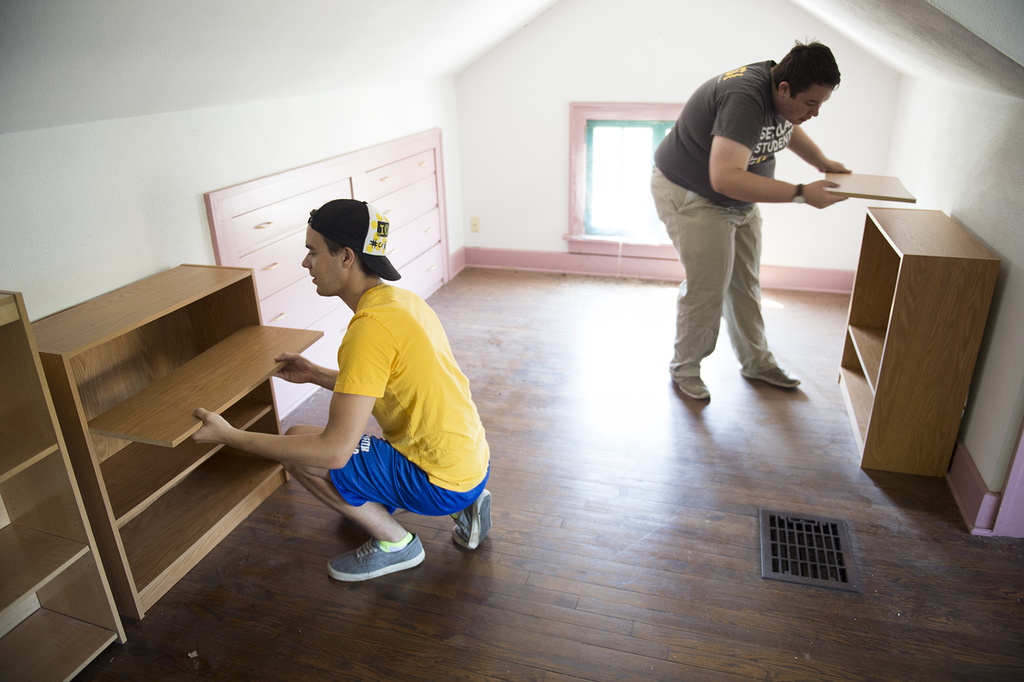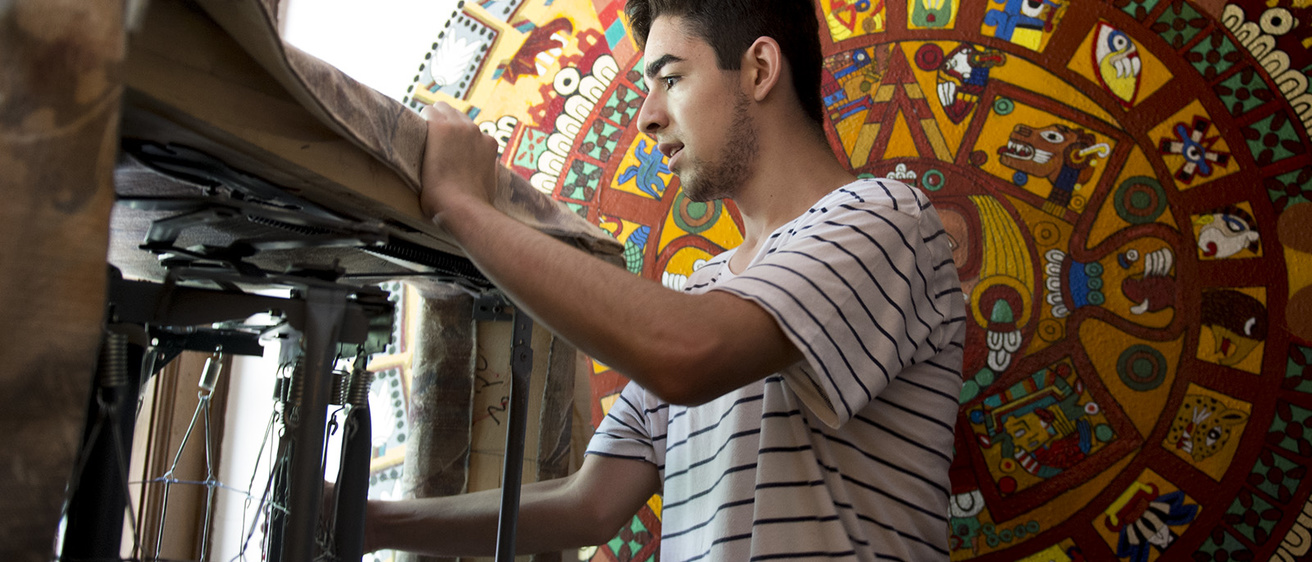Paul Ruales grew up in southern Minnesota where, he says, most of the students at his private school were white.
Although he remembers always feeling accepted, Ruales recognized his difference. He was born in Ecuador and moved to the United States when he was just 3 years old. Ruales admits he was not in touch with that part of his identity, though. For most of his boyhood, he ignored it.
That changed when he was a sophomore at the University of Iowa and accepted a friend’s invitation to the Latino Native American Cultural Center (LNACC) on campus. There, he began to learn about his culture and better understand a part of himself he says he didn’t know much about.
This summer, the UI embarked on an ambitious project to make long-term investments in the university’s four cultural and resource centers—the Afro-American Cultural Center (Afro House); the Asian Pacific American Cultural Center (APACC); the Lesbian, Gay, Bisexual, Transgender, and Queer Resource Center (LGBTQRC); and the LNACC. The work is part of the university’s commitment to improve the campus climate for all members of the UI community.
Ruales, now a senior majoring in biomedical engineering, says the improvements show the UI’s commitment to the role the centers play in the lives of students.

"College is a short journey filled with many obstacles unique to every individual, and centers like the LNACC can play a vital role like it did for me, my friends, and many other students in overcoming some of those obstacles,” he says.
The renovations are among several projects a committee of students, faculty, staff, and administrators worked on this summer that have centered on improving campus safety; increasing training for faculty, staff, and teaching assistants; enhancing student services; and cultivating a culture of inclusion.
Bill Nelson, executive director of the Iowa Memorial Union and leader of the department that provides administrative oversight of the UI Cultural and LGBTQ Resource Centers, says the renovations were based on feedback from students and staff over time.
“President Harreld is committed to this project,” Nelson says. “He has been a driving force.”
“What we did was compile all that we already knew using data that we already had, both historical and recent, and gave it to each constituent and said, ‘Here is what we have heard over time and currently. Look at this list and tell us what is accurate and what is most important,’” Nelson says. “I think that was a really important approach. We wanted the students and others to know that we have been listening.”
Nearly 100 constituents responded to the list of suggested improvements to the centers. Work began this summer, with students playing a major role in cleaning, redecorating, and deciding how to best use the space in each center.
“Every house went through an extraordinary stage of purging, organizing, and then restocking,” Nelson says.
Improvements every center received included basic landscaping, upgraded office equipment and furniture, and new computers and printers. Also, both the LGBTQRC and APACC were connected to the university’s technology and communication grid.
Other improvements:
- Afro House received a new oven and over-the-top microwave and a commercial grade picnic table in the back yard. Two walls upstairs will be removed to create one large space for group activities, and the upstairs will be refurnished when the renovations have been completed.
- LNACC has new paint; a remodeled kitchen with a new refrigerator, stove, and over-the-top microwave; and received a new dining room set, air-conditioning units, and renovations to the outside porch. The center is also scheduled to have its roof replaced.
- The LGBTQRC has a new roof, and an old fence was removed, along with trees, brush, and weeds; inside, it has a new over-the-top microwave, furniture, lamps, drapes, and paint.
- The APACC has new flooring, living room furniture, a commercial-grade picnic table, and paint, and work was done on its screened-in porch.
Nelson says UI Student Government leaders have been strong advocates for the improvements, along with UI President Bruce Harreld.
“President Harreld is committed to this project,” Nelson says. “He has been a driving force.”
Rachel Zuckerman, president of UISG, says the centers a provide a home away from home for many students.
“Students from underrepresented backgrounds tell me all the time they feel like an ‘other’ when they get to campus,” Zuckerman says. “In the centers, however, they feel like they’re part of a community of people like them. (The centers) allow students to embrace their cultures and stay true to themselves while developing an identity as a college student.”
Tracy Peterson, director of Diversity Programs and K–12 Outreach at the UI College of Engineering, says students can feel at home at the centers and celebrate their culture by sharing ethnic food, language, music, and spirituality. He says he remembers bringing his own children to LNACC for gatherings when he was a student at the UI.
“Most Native (American) students brought their families to the weekly potluck meetings, and you could see the children developing in this special place,” he says. “Younger undergraduates enjoyed the familiar noises and quasi–home-cooked meals that alleviated their homesickness and helped them to adjust to college life.”
Jeremy Vogel, a junior majoring in global health studies who has served on one of the UI's student LGBTQ organizations, says he is grateful to have a place on campus where he feels safe to be himself.
“I feel that having the LGBTQRC shows the university is attempting to make our campus an open and welcoming place to LGBTQ–identified students,” he says.
As for Ruales, he says he wouldn’t be who he is today without LNACC.
“The biggest thing these centers do is help us get closer to becoming who we want to become,” he says.
Some more quick facts about the UI Cultural and LGBTQ Resource Centers
Afro-American Cultural Center (AACC), 303 Melrose Ave.
- Commonly known as Afro House
- Established in the fall of 1968 through efforts of the Afro-American Student Association
- Founded with support from the Afro-American Student Association, UI administration, Faculty Senate, Committee on Human Rights, and the UI Student Senate
Asian Pacific American Cultural Center (APACC), 223 Lucas Dr.
- Established and approved by then–Interim President Willard “Sandy” Boyd
- Opened in 2003
Latino Native American Cultural Center (LNACC), 308 Melrose Ave.
- Founded in the summer of 1973 by UI students Tony Zavala, Ruth Pushetonequa, and Rusty Barceló
- Originally located at 115 N. Clinton St. and called the Chicano and Indian American Student Union
- Moved to current location later in 1973
- Renamed the Latino Native American Cultural Center in 1994
Lesbian, Gay, Bisexual, Transgender, and Queer Resource Center (LGBTQRC), 125 Grand Ave. Ct.
- The UI Lesbian, Gay, Bisexual, Transgender, Queer and Allied Union executive board met with UI administration in the spring of 2005 to discuss plans for a center.
- Opened in the fall of 2006
